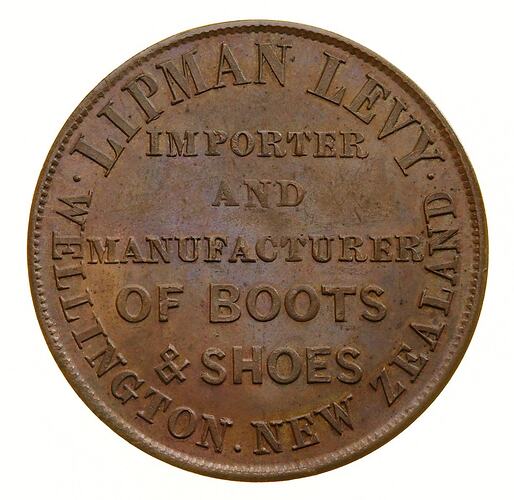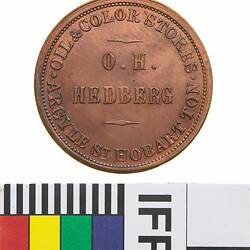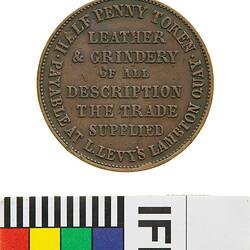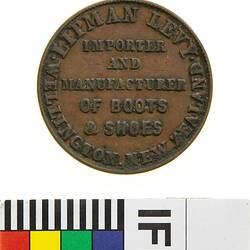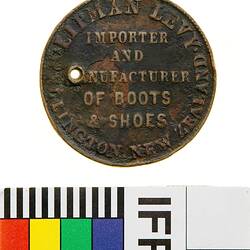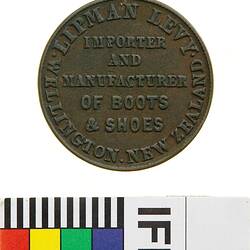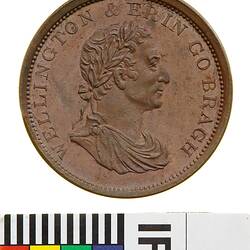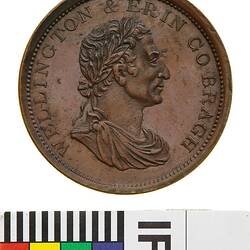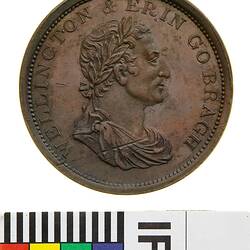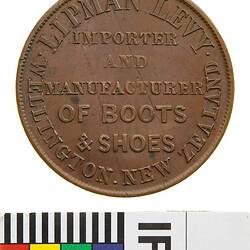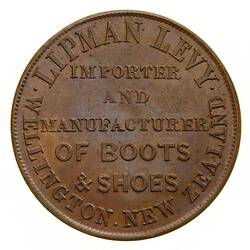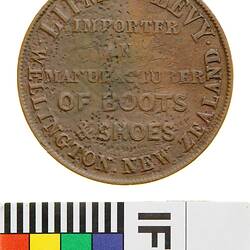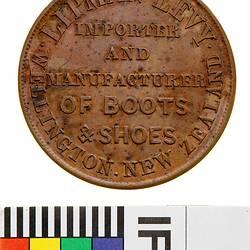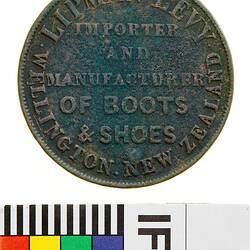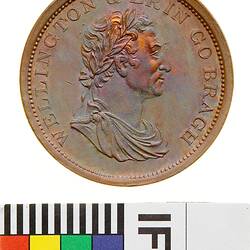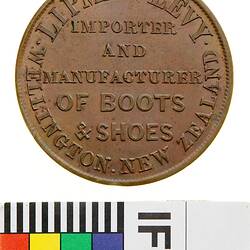Lipman Levy, born in London in 1823, emigrated to Sydney in 1841. He moved across the Tasman to Wellington in 1842 and founded a business with David Isaacs. They were importers and merchants, dealing mostly in shoes and the grindery trade (the tools for making and mending shoes).
Levy returned to Sydney in 1850 as a result of illness, and despite becoming very ill he returned to Wellington, in 1851 he took control of the firm with his brother Benjamin. Lipman's talent as a trader led to his involvement in a wide range of civic and mercantile interests, including the Town Board, the Wellington Benevolent Society, Wellington Gas Co., as well as a number of others. He was encouraged to go into politics, but chose to concentrate on business. In addition to his interests in philanthropic work, he was a Mason for many years, and was Past Master in the New Zealand Pacific Lodge, the oldest in New Zealand. Levy died on 27 January 1880, aged 58, after a brief illness. He was married but had no children.
Levy advertised his business in almanacs for Wellington and New Zealand. 'Isaacs and Levy, Boot and Shoe makers, Lambton Quay' were listed in the Wellington Almanac for 1851. In 1855 he inserted an advertisement in the New Zealand Almanac that read 'Boots and Shoes, Leather, and Grindery, L. Levy, [late Isaacs and Levy]...Trade liberally supplied.' Levy's 1855 advertisement suggests that his partnership with Isaacs ended in 1854. He was also listed at the same address in almanacs for 1859 and 1866.
Robb comments that grindery was an important aspect of the business. Grindery is the name given to the tools used by shoemakers and other leather workers. It seems likely that Levy was engaged in substantial wholesale, as well as retail trade, selling tools and materials to other shoemakers.
Levy issued four varieties of tokens, three pennies and one halfpenny. Their dates of issue are unknown, but must have been between 1857 (when the first tokens were issued in New Zealand) and his death in 1880. Museum Victoria's catalogue gives a number of possible dates of issue: circa 1855, circa 1860 and circa 1880.
References:
Wellington Almanac for 1851.
Advertisement. New Zealand Almanac for 1855. Unnumbered page.
Royal New Zealand Almanac for 1859.
Bull's Wellington Almanac for 1866.
Robb, A.F. (1972). "Currency Tokens and Wellington Traders", The New Zealand Numismatic Journal, May, pp.69-70.
More Information
-
Keywords
-
Localities
-
Authors
-
Article types
